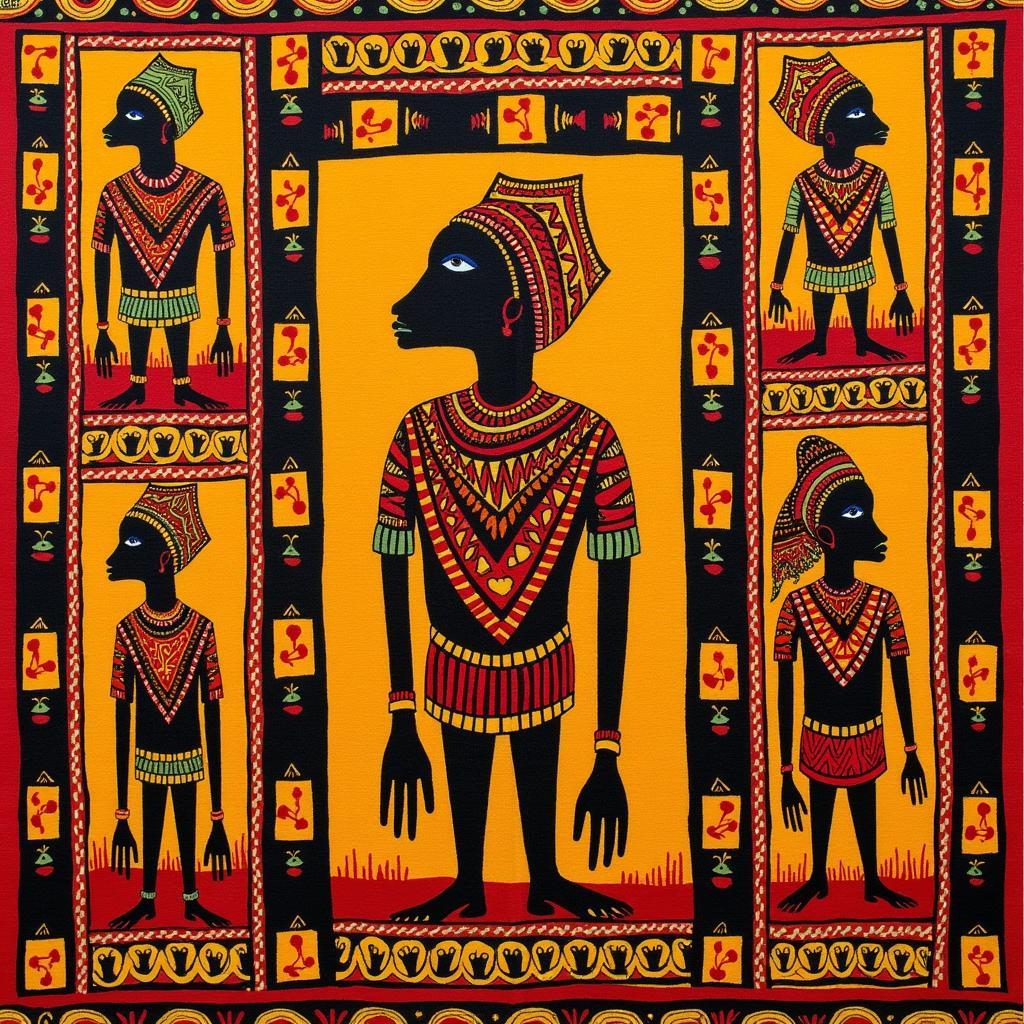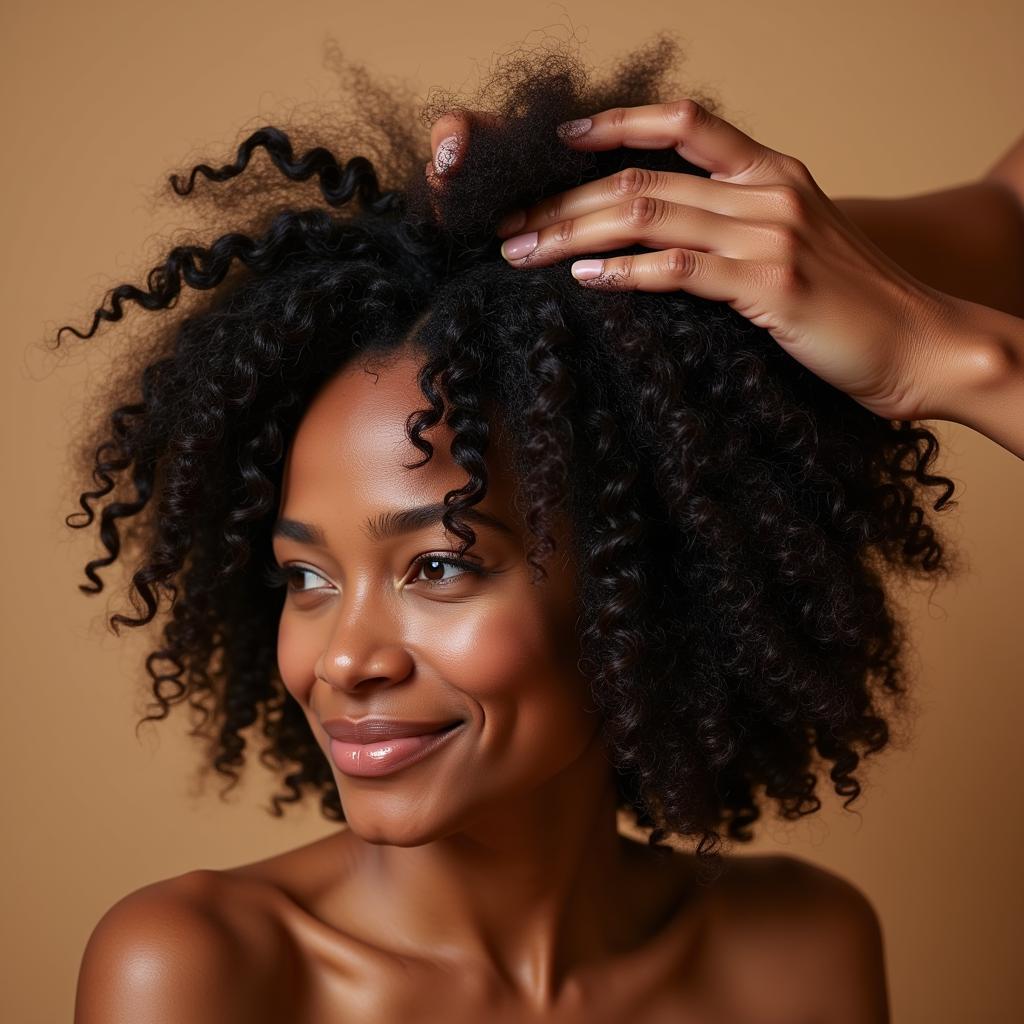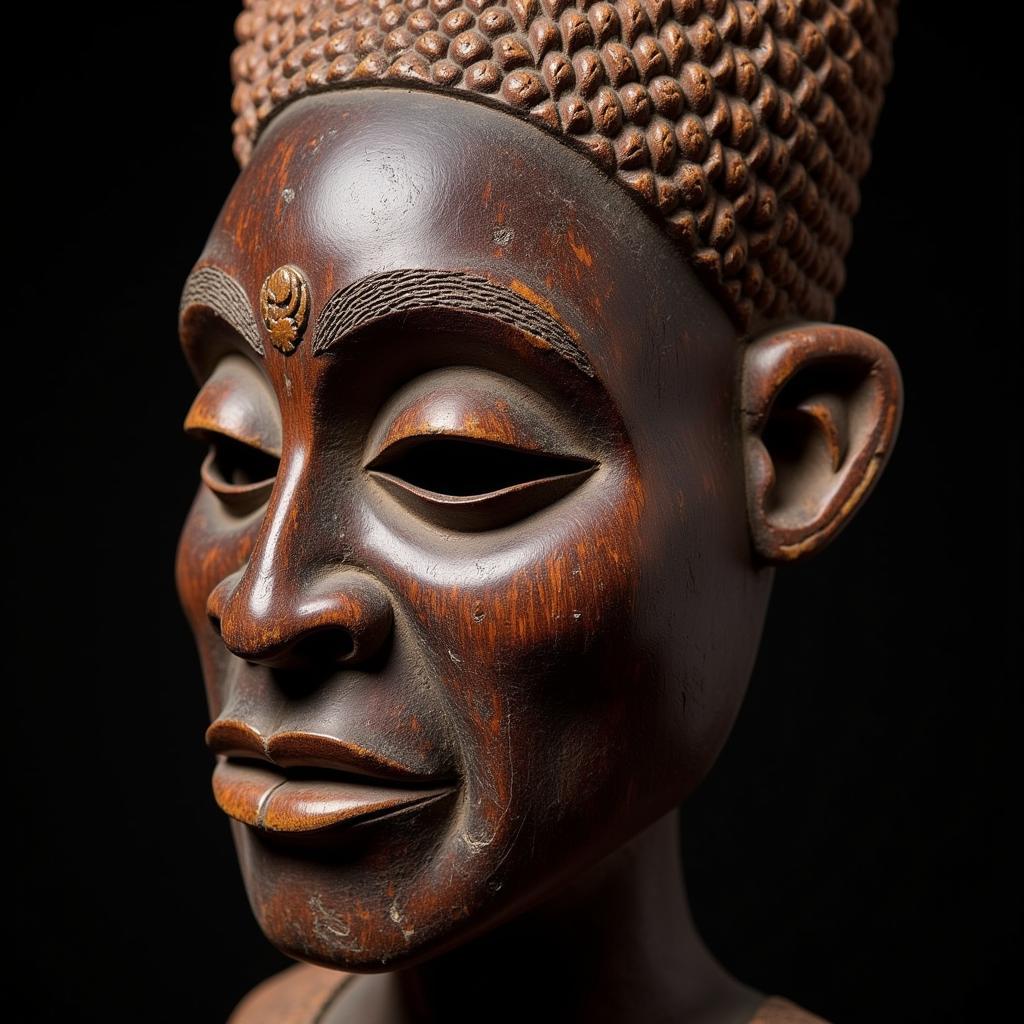African Art and Craft Stories: A Journey Through Creativity and Culture
African Art And Craft Stories are woven into the very fabric of the continent. From ancient traditions passed down through generations to contemporary expressions pushing creative boundaries, African art offers a captivating glimpse into the diverse cultures, beliefs, and histories that shape this vibrant land. These aren’t just objects; they’re narratives, whispering tales of resilience, innovation, and deep connection to the land.
Unmasking the Narratives: Exploring African Art and Craft Stories
African art and craft go beyond mere aesthetics. They serve as a powerful medium of communication, preserving history, conveying social commentary, and embodying spiritual beliefs. Each piece, whether a meticulously carved mask, a vibrant textile, or an intricately beaded necklace, carries a story. These stories reflect the unique experiences and perspectives of the artists and the communities they represent. For example, the intricate patterns of kente cloth from Ghana tell stories of royalty and social status, while the bold lines of Ndebele house painting in South Africa express cultural pride and feminine power. Understanding these narratives enriches our appreciation of the artistry and provides valuable insights into the rich tapestry of African cultures. You might also find interesting articles about african inspired home decor.
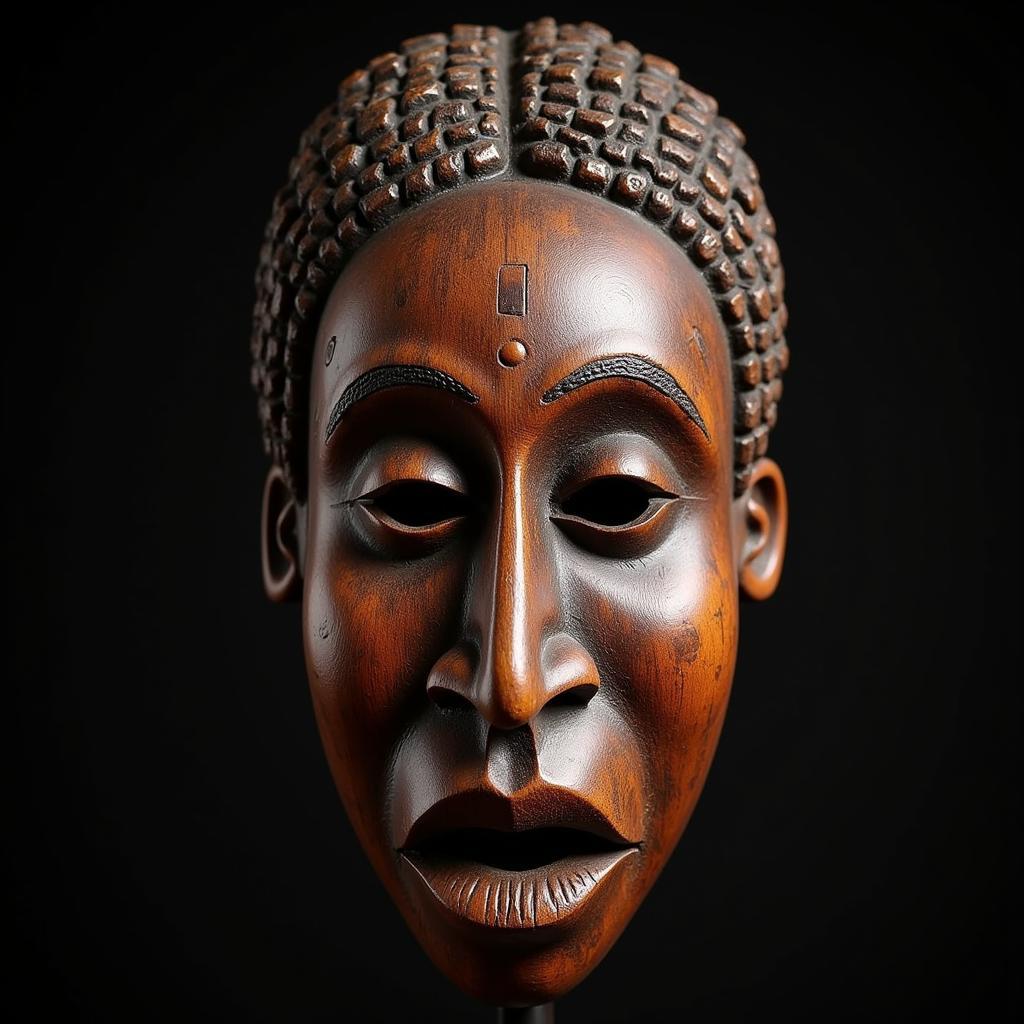 African Mask Depicting Storytelling Traditions
African Mask Depicting Storytelling Traditions
The Power of Symbolism in African Art
Symbolism plays a crucial role in African art and craft stories. Artists employ a rich vocabulary of symbols to convey complex ideas and meanings. Animals, natural elements, and ancestral figures are often imbued with specific significance, representing power, fertility, wisdom, or protection. For instance, the leopard is often associated with royalty and leadership, while the spiral symbolizes growth and continuity. These symbols add layers of meaning to the artwork, inviting viewers to delve deeper into the cultural and spiritual contexts that inform their creation.
What are some common symbols used in African art? Common symbols include animals like the leopard and lion (representing strength and royalty), natural elements like water and fire (representing life and transformation), and ancestral figures (representing connection to the past).
From Generation to Generation: The Preservation of Tradition
Many African art forms are rooted in ancient traditions, passed down through generations of skilled artisans. These traditions embody a deep respect for ancestral knowledge and a commitment to preserving cultural heritage. Master craftspeople often serve as mentors, guiding younger generations in the intricacies of their craft and ensuring the continuation of these valuable artistic practices. This intergenerational transmission of knowledge not only preserves artistic skills but also reinforces cultural identity and strengthens community bonds. Check out interesting articles on african blackwood carvings.
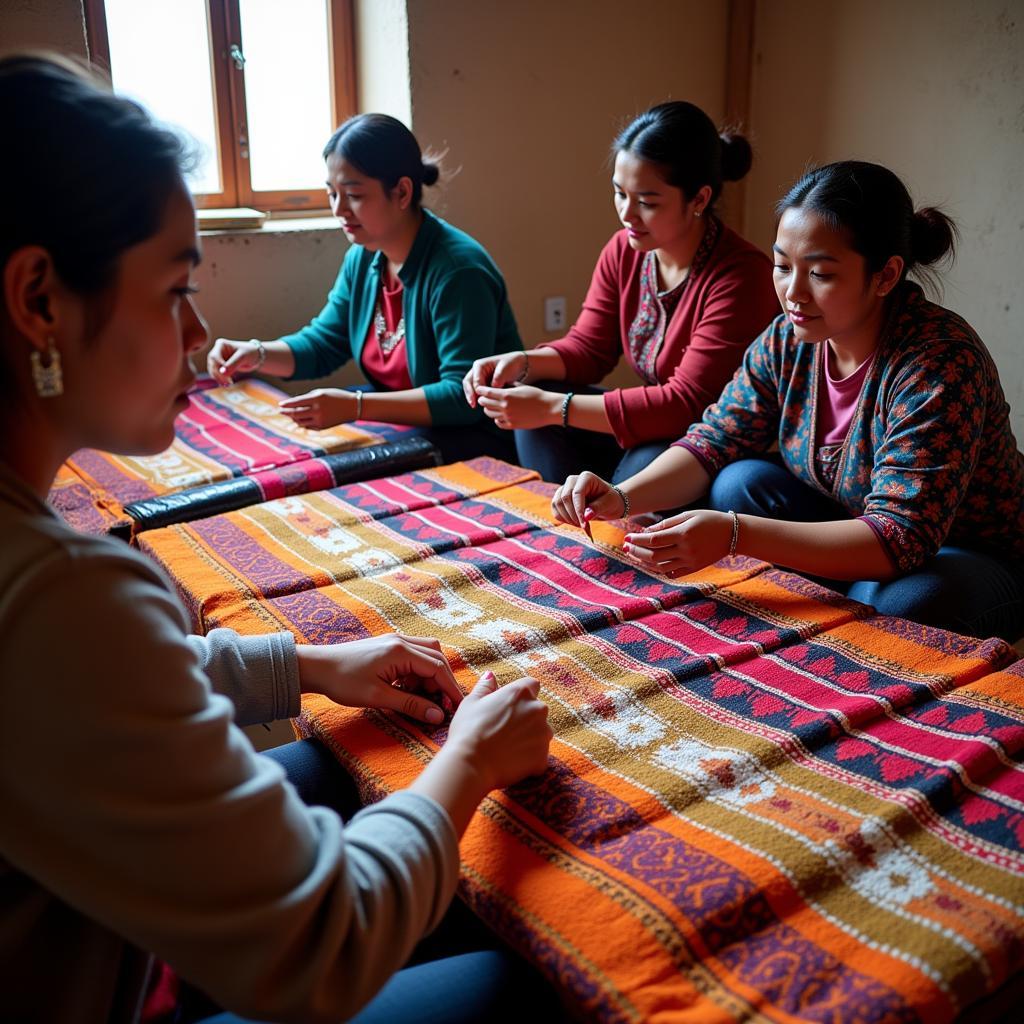 Traditional African Textile Weaving Process
Traditional African Textile Weaving Process
African Art in the Modern World: Innovation and Evolution
While deeply rooted in tradition, African art is not static. Contemporary African artists are pushing creative boundaries, experimenting with new materials and techniques while still drawing inspiration from their cultural heritage. This dynamic interplay between tradition and innovation has led to a flourishing of contemporary African art that is gaining international recognition. Artists are exploring themes of identity, globalization, and social justice, using their art to engage with contemporary issues and contribute to global artistic dialogues. Learn more about african drama and performance.
Why are African art and craft stories important?
African art and craft stories are important because they provide a window into the rich and diverse cultures of the continent. They offer valuable insights into history, beliefs, and social structures, and they celebrate the creativity and resilience of African people. You may also find african juwalary an interesting topic.
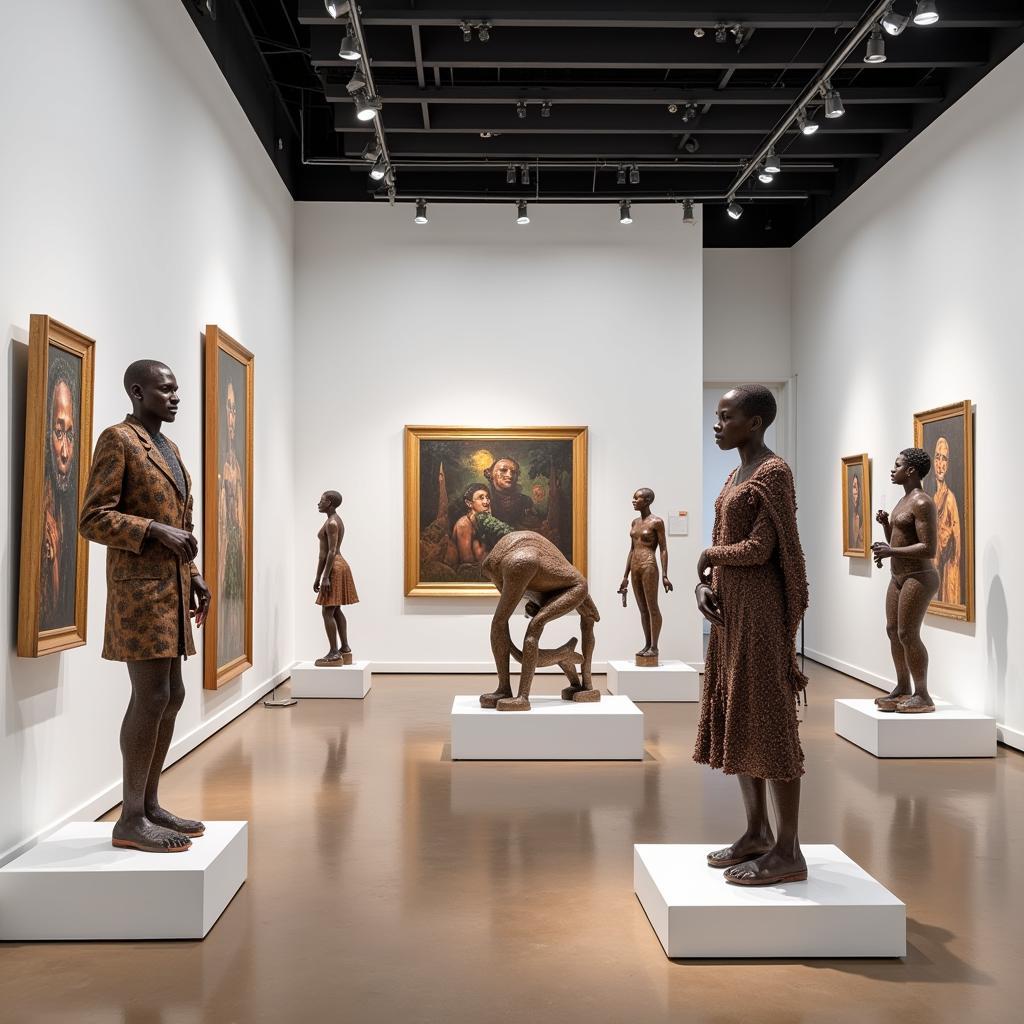 Contemporary African Sculpture Exhibition in a Modern Art Gallery
Contemporary African Sculpture Exhibition in a Modern Art Gallery
In conclusion, African art and craft stories are a testament to the enduring power of creativity and cultural expression. These artistic narratives provide a captivating journey through the diverse landscapes of African history, spirituality, and social commentary. By understanding these stories, we gain a deeper appreciation for the richness and complexity of African cultures and the profound impact of art on human experience.
Expert Insight: Dr. Anika Nkosi, a renowned art historian specializing in African art, notes, “African art is not just about aesthetics; it’s about storytelling. Each piece carries a narrative, a piece of history, a reflection of cultural values.”
Another expert, Adebayo Olamijuwon, a celebrated Nigerian sculptor, adds, “Tradition informs our work, but innovation propels it forward. We build on the legacy of our ancestors, adding our own voices to the ongoing conversation of African art.”
FAQ
- What are some common materials used in African art? Common materials include wood, clay, metal, textiles, beads, and natural pigments.
- What is the significance of masks in African culture? Masks often play a significant role in rituals, ceremonies, and performances, representing spirits, ancestors, or social roles.
- How has colonialism impacted African art? Colonialism has had a complex and often negative impact on African art, leading to the appropriation of cultural objects and the suppression of traditional artistic practices.
- Where can I learn more about African art? Museums, galleries, cultural centers, and online resources offer opportunities to learn more about African art.
- Are there opportunities to support contemporary African artists? Yes, many galleries and online platforms specialize in showcasing and selling contemporary African art.
- How can I incorporate African art into my home decor? African inspired home decor can add a unique and vibrant touch to your living space.
- What are some examples of traditional African crafts? Examples include pottery, weaving, basketry, beadwork, and metalworking.
We encourage you to explore other articles on our website, such as those covering african inventions and discoveries. For any assistance, please contact us at +255768904061, kaka.mag@gmail.com, or visit us at Mbarali DC Mawindi, Kangaga, Tanzania. Our customer service team is available 24/7.
